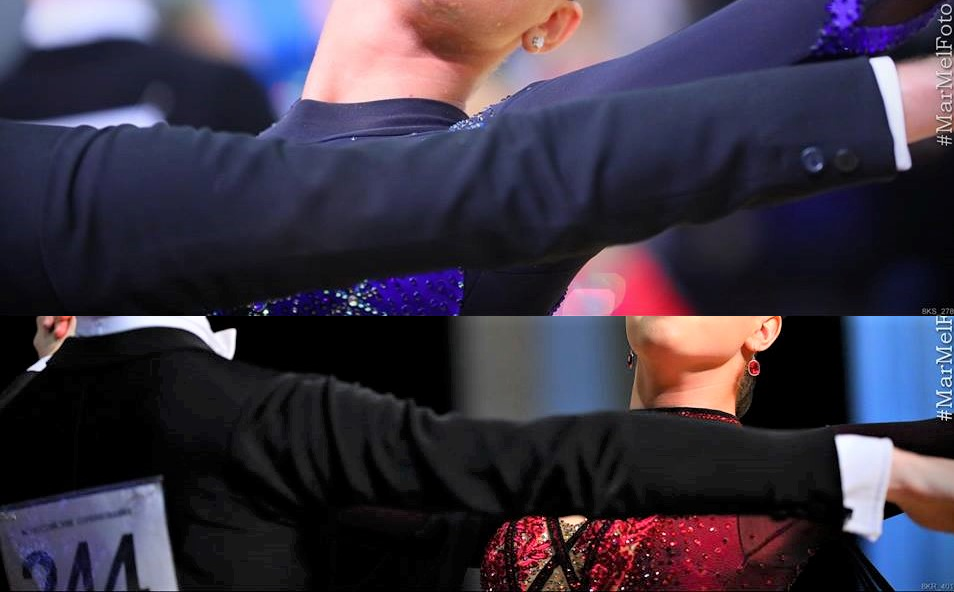Why Do We Dance In A Tail Suit?
The tail suit is so connected to ballroom dancing that became, together with the lady’s dress, an icon of the style itself. If you need to explain what Standard dance is to a person that’s not familiar with this discipline is enough to say “a man in a tail suit and a girl in a long beautiful dress, dancing together.”
Since the 18th century, the tail suit (or tailcoat) is the most formal men’s wear. It is especially worn when the required dress code is the so-called “white tie”. Therefore, ballroom dancing has been from the very beginning associated with this iconic style and continues to be a distinctive sign of class and elegance.
The tail suit nowadays
Nevertheless, the tailcoat suffered quite a lot of changes over the years, as dancesport has evolved as well. Notably, during the last 20 years, we can see that dancers prefer lighter materials instead of the wool used before. Furthermore, the overall fitting is slimmer in order to enhance the lines of the body during the movements.
Common Mistakes You Should Avoid
1. The shoulder is too long

It is very important that the length between the neck and the end of the shoulder to be shorter than the actual distance between the neck and the end of the collar bone. If this part is too long, it will be uncomfortable and in some cases even painful to hold your arms in the right position.
2. The armscye is too wide
Check the fitting carefully around the shoulder, around the underarm and the shoulder blade. The armhole should be much smaller than a normal suit, almost too small when you rest with your arm down, but perfectly in contact with the body when you hold your arms up.
3. Wrinkles on the upper sleeve

One of the most difficult aspects to get right. If you find the correct proportions, you can have a sleeve that is visually flattering, not too slim and at the same time without wrinkles that will give you a bad top line. In order to reduce wrinkles, many masters nowadays, twist the connection line between upper and lower sleeve, so that the sleeve will follow better the “unnatural” position of the arms when you dance.
4. The sleeves are too long

This will not affect your dancing but is simply unpleasant to the eye. Check that the sleeve ends a couple of centimeters before the shirt cuff. The shirt cuff as well should be long up to the wrist, without covering part of the palm.
5. The waist is too low
The rise of the trousers should be at about 10 cm higher from the belly button. If they are too low, the waistcoat will be too low as well and will be visible when stretching the sides of the trunk.
6. Missing waistcoat

If your suit is open in the front, you should wear a waistcoat too.
7. The sides are too long or too short
If the waistcoat is visible when stretching one side of your body, it means that the sides of your jacket are too short or the waistcoat is too low. If when bending the trunk on the side you can see many wrinkles, that means that the jacket is too long on the sides.
8. The proper length of the tails

Nowadays, everybody agrees that the tails should reach the point where the circumference of the calf is the greatest.
9. Too much space between your spine and the back of the jacket
The jacket should follow your movement. Therefore if there is a big gap in the back area, you will see many wrinkles when twisting the trunk.
10. The trousers are too tight
If in Latin American dance we can see different styles, in standard wide end trousers are the go-to choice.. To give you an example, for a 180-185 cm height, the width at the very end of the trousers should be around 28-30 cm.
Having A Close Eye
When buying a tail suit or getting it custom made, always ask someone to check how it fits you, maybe your teacher or an expert dancer. You should control carefully that all the points listed above are suited for your body. Also, check the conditions of the fabric especially on the right side where most of the brushing against the girl’s dress happens.
Of course, a good dancer can show his best in any condition, but for the judge’s eye how you look, your style and the attention to the details is very important. In some cases, it can become the reason why he prefers you to others if the level is too similar. Always keep your tail suit looking its best!
Now, that we’re on the topic of looking perfect on the dancefloor, if you really want to improve your hairstyling skills, follow Madis Abel’s course on Dancesportlife Academy on “How To Make A Ballroom Dancing Hairstyle For Men”
Find the author on
Photo credits: Marina Melnikova





